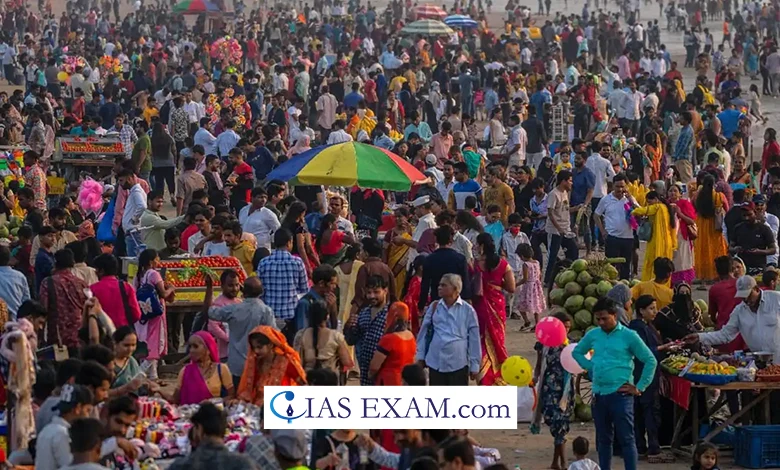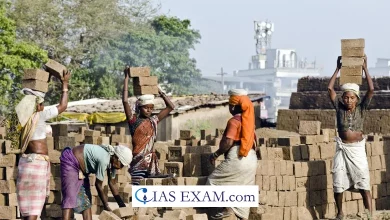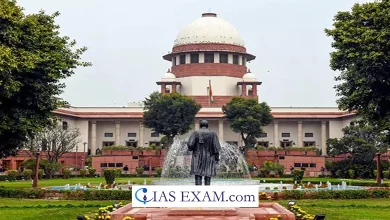Daily Current Affairs for UPSC
UNFPA Report on India’s Population
Syllabus- International Organisation [GS Paper-2]

Context
As per a recent report released by the United Nations Population Fund (UNFPA), India’s population is estimated to have reached 1.44 billion, with 24% in the 0-14 age bracket.
Key Highlights
- The UNFPA’s State of World Population – 2024 report, titled ‘Interwoven Lives, Threads of Hope: Ending Inequalities in Sexual and Reproductive Health and Rights’, found out that India’s population is anticipated to double in 77 years.
- India leads globally with an envisioned population of 1.44 billion, followed by China at 1.425 billion.
- India’s population was recorded at 1.21 billion over the past census, performed in 2011.
Demographic Categorisation in India
- An anticipated 24% of India’s population is aged 0-14, whilst 17% is in the 10-19 age range.
- The section elderly 10-24 is anticipated to constitute 26%, with the 15-64 age group making up 68%.
- Additionally, 7% of India’s population is aged 65 years and above, with men having a life expectancy of seventy one years and women 74 years.
Key Takeaways From the Report
- Progress in Sexual and Reproductive Health: Over the past 30 years, full-length strides have been made in the International Conference for Population and Development (ICPD) agenda.
- The international rate of accidental pregnancies has fallen by almost 20% globally.
- The range of women using modern contraceptive strategies has doubled.
- At least 162 countries have followed legal guidelines against domestic violence, and maternal deaths have decreased by 34% since 2000.
- Persistent Inequalities: Despite the progress, hundreds of thousands are still denied their health rights each day.
- Gender-primarily based violence remains rampant in almost every country and community.
- There has been 0 discount in maternal mortality due to the fact 2016, and in an alarming quantity of countries, the quotes are rising.
- Nearly half of women nevertheless are unable to make choices about their own bodies.
- Marginalised Groups: The record suggests that although ladies throughout socioeconomic instructions and ethnicities say barriers to health care have come down over the years, the ladies most marginalised have skilled the least development.
- Women of African descent are observed to be greater vulnerable to obstetric mistreatment and terrible maternal fitness outcomes.
- Indigenous women are frequently denied culturally about maternal health care, and their personal childbirth practices can be criminalised, resulting in notably better threat of dying in pregnancy and childbirth.
Key Concerns Highlighted in the Report
- Discrimination and Stigma: The record highlights the position racism, sexism, and other sorts of discrimination keep to play in blocking off high profits in sexual and reproductive health for women and girls.
- Women and ladies with disabilities resist 10 times more gender-based violence at the same time as additionally dealing with better barriers to sexual and reproductive records and care.
- LGBTQIA+ human beings face critical health disparities in addition to – and because of – discrimination and stigma.
- Health and Social Challenges: The report has found that 30 years of progress in sexual and reproductive health has broadly speaking ignored the maximum marginalised communities worldwide.
- According to it, the child marriage percent in India was at 23% between 2006-2023.
- The maternal deaths in India have fallen appreciably, accounting for 8% of all such fatalities worldwide.
Conclusion and Way Forward
- The file indicates that to fulfill the promise of sexual and reproductive health and rights, one needs to root out inequalities from our fitness systems and policies and focus as a priority on the women and younger folks who are highest marginalized and excluded.
- On the other hand, the large younger populace presents a sizeable opportunity for financial growth and development.
- However, it additionally underscores the want for persevered efforts in enhancing fitness and social outcomes, specifically for the most marginalised communities.
Source: Indian Express
UPSC Mains Practice Question
Q.Discuss the main objectives of Population Education and point out the measures to achieve them in India in detail. (2021)





.png)



